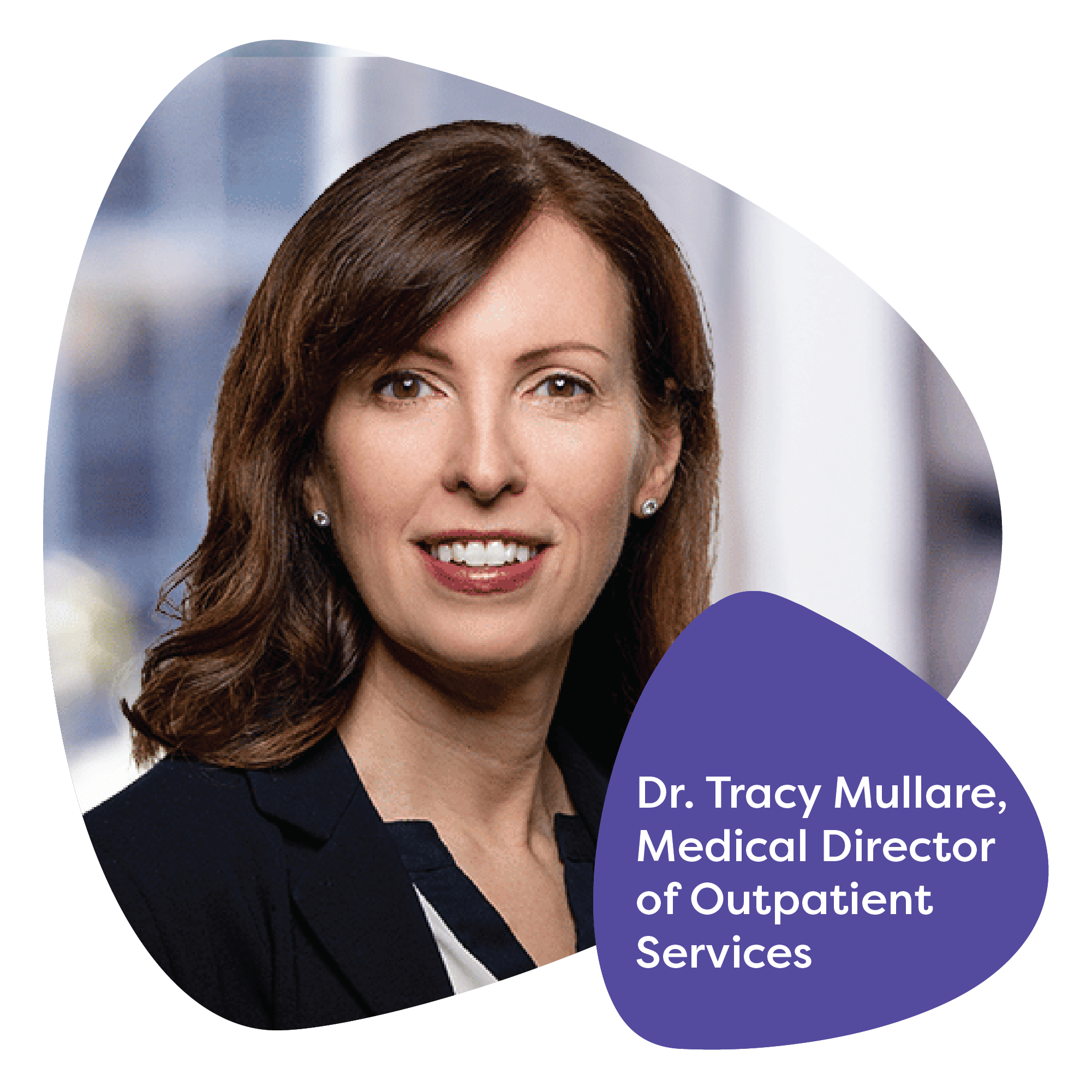Virtual care helps transform a health system’s approach to behavioral health care, giving their communities and providers much needed support. However, there are several considerations to keep in mind when it comes to virtual behavioral health integration.
In a webinar hosted by Becker’s Hospital Review, healthcare leaders from Elliot Health System and Texas Health Resources shared their strategic and economic cases for behavioral health integration, insights into implementing virtual services into their organizations, and the benefits of integration.
Provider shortages make virtual behavioral health a strategic priority in Texas and New Hampshire
The behavioral health provider shortage continues to be a challenge for many healthcare organizations. And, according to the Texas Department of State Health Services, 246 of the 254 counties in the state are designated as Health Professional Shortage Areas.
Kathi Cox, Chief Operating Officer, Ambulatory & Virtual Channel at Texas Health Resources (THR) shared that Texas is one of largest growing areas in the country and with more people moving to the region, the demand for behavioral health grows.
“Texas Health happens to be one of the health systems in this community that has a very robust inpatient behavioral health service line across multiple hospitals within our system. However, we didn’t have any low acute services as part of our portfolio.”
She went onto share that depression is at an all-time high and there’s a lack of resources to treat the youth and senior members of their community. For low acuity behavioral health, Cox shared that patients may be waiting anywhere from six to 10 weeks for a first appointment.
Kathi Cox, Chief Operating Officer, Ambulatory and Virtual Channel, Texas Health Resources
When we think about Texas Health and how we approach this, the idea was to provide a longitudinal offering for the people in our community that would allow them to be treated for behavioral health within an integrated network of providers across our primary care physicians and our hospitals.
In New Hampshire, Dr. Holly Mintz, Chief Medical Officer at Elliot Health System (Elliot), shared that they have also experienced a shortage of resources, citing they’re one of the few hospitals that have an inpatient behavioral health and geriatric psychiatry unit.
Reflecting on the lack of resources in their community, Dr. Mintz discussed the importance of ensuring patients had someone they could see for their behavioral health needs.
“We looked at the number of behavioral health calls that our triage nurses were receiving, and we knew we needed to do better. We needed to do better in placing people with therapists and better understanding what they need as far as either medication management or therapy.
We want to make sure that it was not acceptable to have a 60-day wait between a referral and an intake process, let alone seeing a provider. We really needed to focus on decreasing the time to care, which we knew would benefit care holistically.”
Virtual behavioral health care enables early access to treatment and better outcomes
Behavioral health touches everyone and making sure people can get care they need when they need it is at the heart of every healthcare organization’s mission.
Additionally, implementing a solution like virtual behavioral health care comes with considerations health systems must think through to determine where it will fit into their priorities and ensure the solution makes good financial sense.
At Elliot, Dr. Mintz says they viewed virtual behavioral health as an avenue to improve early access, positively impact outcomes, and prevent hospitalizations.
Dr. Mintz shares they learned that one out of every five calls their triage nurses received were about behavioral health, and the average length of the call was around 27 to 30 minutes, causing providers to burn out and keeping patients from timely care.
Dr. Holly Mintz, Chief Medical Officer, Ambulatory Care Services, Elliot Health System
We were able to convert those triage calls into actual full intakes from a licensed social worker, that provided the patient with a full evaluation, and were billable. We were able to cover the cost of investing in provider hiring by converting those triage calls to a full intake.
There’s a brief triage (assessing presence of a crisis), then the patients have an intake and transfer within one to two business days. That visit is billable. It’s a benefit for everyone and helped make this new program sustainable.
Discussing how THR viewed integrating virtual behavioral health services, Cox shared that they view it as an investment – thinking about behavioral health as a component of their other service lines, rather than a standalone program.
“For our chronic patients, whether they are facing CHS challenges, COPD, hypertension or diabetes, behavioral health ends up being an underlying challenge for these patients. The benefit for all the service lines comes when we can address those mental health challenges of those patients.”
Behavioral health integration defines success for health systems
Every organization defines success differently. However, one common thread between Elliot and THR is ensuring behavioral health care is a priority and well-integrated into patient care.
Reflecting on this Cox shared her vision of what success at THR looks like in the next several years.
Kathi Cox, Chief Operating Officer, Ambulatory and Virtual Channel, Texas Health Resources
Success in three to five years looks like very strong relationships between our behavioral health and employed physicians – whether that’s in our psychiatric practice, inpatient, or outpatient space. Rather than it be two different areas – these groups are working together.
Traditionally, you have a lot of primary care physicians or specialists dealing with their patient’s medical health over here and mental health issues over there – it’s very disjointed.
Now that we’ve created a much more integrated approach, there’s an opportunity for those things to work together. If we are collaborating across the organization for these patients, I think that’s a big success area.
For Dr. Mintz, she shared Elliot aims to create a straightforward system for their behavioral health patients.
“We are looking to enhance a straightforward process for patients and help them navigate it. So, when somebody presents with cancer, there’s a nurse navigator that helps them navigate through the system.
What we hope to do is make things very simple so when a primary care provider sees a patient who needs behavioral health services and has a general assessment of what they need, they’re referred to one place – there’s not nine different referrals where they could potentially go, and there’s an understanding of what the provider feels that patient needs.”
Payers are becoming more aware of the need to provide behavioral health services
For health systems, transforming their service lines comes with considerations around payers. At Elliot, Dr. Mintz shared that payers are becoming more aware of the need to provide behavioral health services, noting that insurance companies are becoming more expansive.
Dr. Mintz also said that they continue discussing the importance of expanding opportunities for behavioral health patients with lawmakers and their Department of Health and Human Services.
For THR, Cox noted that they’re cautiously optimistic about the payer.
“We’re still a fee for service area of the country, value-based hasn’t really hit us at all here in Texas. Everything we do is very fee-for-service based. I think that payers are saying that behavioral health is important.
We still have not seen an adjustment in how their coverage may be expanded or reimbursed in a meaningful way that pays for the cost of taking care of patients.”
At times, access to community mental health centers can be delayed up to a year
For primary care providers, they may not always be comfortable working with behavioral health patients without the specialty expertise or insights into medication management.

At Elliot, Dr. Mintz shared that one of the most common things she hears from their medical group is the challenges they face with patients who have behavioral health conditions they’re not comfortable managing.
For example, if a patient is on medications or doses that the provider isn’t comfortable with, Dr. Mintz says it demands and deserves a specialty opinion.
She went on to say that a key challenge with managing these patients is access and it sometimes can be delayed up to a year for community mental health centers.
To address these challenges, Dr. Mintz shared that Elliot is developing a stability clinic for patients who need a higher level of care.
“We’re also enabling the providers to help explain to patients what they actually need so that the patients can understand they’re going to be with somebody for three months temporarily, but they will be transitioned to another level of care.”
The key to internal buy-in for launching a behavioral health program
Implementing a behavioral health program comes with financial and practical considerations that can help influence buy-in from stakeholders across the organization.
At THR, Cox shared that they have a strategic initiative called, “Vision 2026,” that puts the patient at the center of every decision they make. Together, they worked to better understand their community and determine where their patients were going for care.
They also wanted to tune into their data and have a good understanding whether they need to build or buy a solution. When they started to look for a partner, they did a lot of research and shared the findings with their organization.
THR also wanted to ensure their physicians were on-board and shared how it would complete their continuum of care.
Cox also shared that the patients were a key part of the equation, along with their overall organization.
“Up until now we released them [patients] into the wild with no way to lasso them back or to have physicians where their medical home was, have information about their treatment.
Then finally, the last stakeholder is our organization. We want to make sure they understand how we are staying accountable and what the outcomes are that we promised and how we are achieving them.”
For Dr. Mintz at Elliot, her team met with their medical group to understand their challenges and their primary take away was the need for behavioral health access.
They also determined integrating a solution that would provide more support would inherently drive provider satisfaction and be appealing to future providers.
Dr. Holly Mintz, Chief Medical Officer, Ambulatory Care Services, Elliot Health System
We were able to help engage our senior leadership in really bolstering our outpatient support, in addition to the fact that we all know it’s a competitive world out there, and we’re all hoping to attract providers, triage nurses, and medical assistants.
If we can take a situation that is causing a significant amount of stress and manage it better, we hope that we will be on people’s top of mind for a place where they want to work and deliver care.
At Elliot, 80% of virtual care is for their behavioral health services
Since the onset of the COVID-19 pandemic, there has been much discussion around a virtual versus an in-person approach to healthcare.
For behavioral health, virtual care has helped expand the reach of care and help open up the pool of providers available to organizations like Elliot and THR.
At Elliot, Dr. Mintz shared the exceptional advantage virtual care provides to their organization overall and the time to care for patients.
“We’ve been able to hire four to five other providers who are working virtually, who are helping us manage our behavioral health patients, both with therapy as well as with intake. Virtual care allowed us to expand beyond our state walls.
We’ve gone from a 60 day wait for an intake to now we can do an intake within one to three business days, and that’s because of telehealth.”
Next steps to building out your health system’s behavioral health programming
We are so grateful for the time Dr. Holly Mintz and Kathi Cox shared with us. Thank you for your partnership and for all the incredible work you are all doing to expand behavioral health to your community.
Weren’t able to make it to the webinar? You can catch the full video here.
If you’d like to learn more and figure out the next steps to building out your health systems behavioral health programming, you can contact us today to get started!




